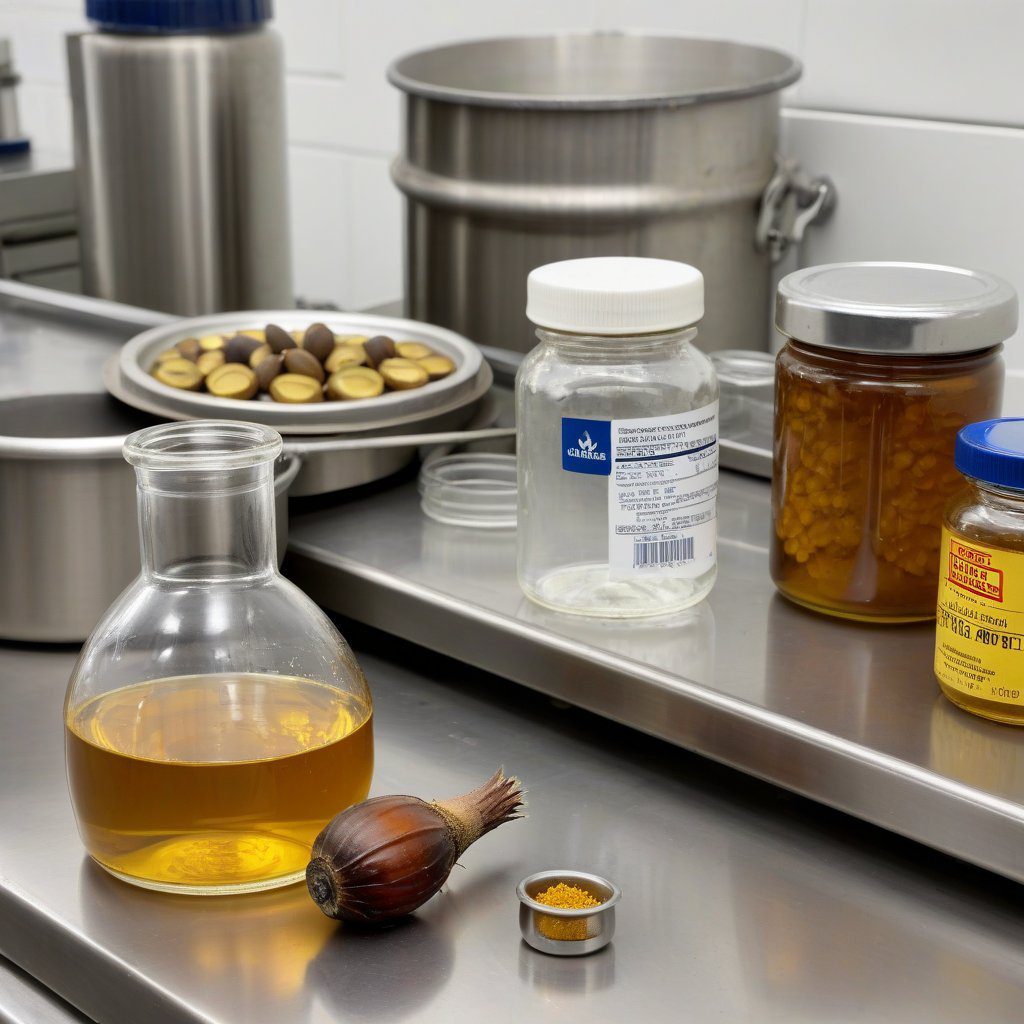How to analyze the demand for glycerol in various industries? This process involves assessing market trends, consumer needs, and potential applications of glycerol across sectors.
How to analyze the demand for glycerol in various industries? This question is crucial for businesses looking to optimize their supply chain and meet market needs. In this post, you will discover effective strategies and insights to evaluate glycerol demand, enabling you to make informed decisions.
By understanding market dynamics and consumer behavior, companies can better position themselves and ensure a steady supply of glycerol. You’ll learn about key factors influencing demand and how to leverage this knowledge to find a reliable glycerol supplier, like Diplomata Comercial, that meets your needs.
Stay with us as we delve into the analysis techniques that can elevate your business strategy and enhance your competitive edge.

Understanding Glycerol: Key Definitions and Concepts
Glycerol, also known as glycerin, is a versatile compound widely used across various industries. This clear, odorless liquid is a byproduct of the soap-making process and is essential in the production of numerous products.
Its chemical structure consists of three hydroxyl groups, making it hygroscopic and an excellent solvent. Understanding these properties is crucial for companies looking to utilize glycerol effectively in their products.
Industries such as cosmetics, food, pharmaceuticals, and biodiesel rely on glycerol for its unique characteristics. By grasping these fundamentals, businesses can appreciate the significance of glycerol within their sectors.
The Significance of Assessing Glycerol Demand in Industry
Analyzing the demand for glycerol is vital for companies aiming to optimize their supply chains. Accurate demand assessments impact cost management, enabling businesses to make informed purchasing decisions.
Furthermore, understanding glycerol demand fosters strategic partnerships with suppliers. Companies like Diplomata Comercial, a trusted glycerol supplier, can provide insights into market trends, ensuring continuous supply and quality.
Ultimately, demand analysis contributes to business growth and sustainability, allowing companies to adapt to changing market conditions.
Essential Criteria for Evaluating Glycerol Suppliers
When selecting a glycerol supplier, companies should consider several critical factors. Purity levels are paramount, as high-quality glycerol directly impacts product performance.
Production capacity is another essential criterion. A supplier with robust manufacturing capabilities, like Diplomata Comercial, can ensure consistent supply, which is crucial for businesses operating at scale.
Additionally, compliance with regulations and reliability of supply should be evaluated. Engaging with a reputable supplier helps mitigate risks associated with product quality and availability.
Step-by-Step Guide to Analyzing Glycerol Demand
To analyze the demand for glycerol effectively, businesses should start with comprehensive data gathering. This includes market research techniques, such as surveys and industry reports, to understand current trends.
Utilizing tools like SWOT analysis can provide insights into market positioning and competitive landscape. Companies can assess the strengths, weaknesses, opportunities, and threats related to glycerol usage in their specific industries.
Finally, forecasting demand trends can be accomplished using historical data, enabling businesses to prepare for future market fluctuations.
Advanced Techniques for Demand Analysis and Forecasting
For more accurate demand analysis, advanced methodologies should be employed. Statistical models, such as time-series analysis, can enhance forecasting accuracy by identifying patterns in historical data.
Market segmentation is another effective strategy. By categorizing the market into segments like food, cosmetics, and pharmaceuticals, businesses can tailor their approaches to specific demands.
Predictive analytics tools can also be leveraged to anticipate future demand, allowing companies to adjust their strategies proactively.
Common Pitfalls in Demand Analysis and How to Avoid Them
Many companies face challenges when analyzing glycerol demand, often due to over-reliance on outdated data. It’s crucial to utilize the most current information to reflect real market conditions.
Neglecting market fluctuations can lead to significant miscalculations in demand forecasting. Regularly updating data and engaging with suppliers, like Diplomata Comercial, can help mitigate these risks.
Implementing regular reviews and adjustments to demand strategies ensures that companies remain agile and responsive to market changes.
Case Study: Analyzing Demand in Specific Industries
Cosmetics Industry
A cosmetic company looking to expand its product line to include glycerol-based moisturizers should start with targeted market research. This involves analyzing consumer trends and preferences related to glycerol.
Engaging with industry experts and suppliers can provide insights into current demand levels. Utilizing data analytics tools can also help identify gaps in the market.
Food Industry
For a food manufacturer considering glycerol as a sweetener, it’s essential to assess local demand and identify competitors. Conducting surveys and analyzing competitor offerings will provide clarity on market saturation.
Additionally, exploring regional preferences will help tailor products to meet consumer expectations. Collaborating with a reliable glycerol supplier can ensure access to high-quality ingredients.
Biodiesel Sector
Entrepreneurs planning to start biodiesel production should evaluate the current market saturation for glycerol. Conducting thorough market research and trend analysis will help inform investment decisions.
Engaging with industry associations and utilizing market reports will provide valuable insights into demand dynamics.
Pharmaceutical Industry
Pharmaceutical companies exploring glycerol in drug formulations can access resources like industry publications and market analysis reports. Leveraging these data sources will aid in understanding glycerol’s role and demand in pharmaceuticals.
Additionally, collaborating with suppliers, like Diplomata Comercial, can provide insights into quality and compliance that are crucial for product development.
Local Chemical Suppliers
Local suppliers of industrial chemicals should adopt a multifaceted approach to analyze glycerol demand across various industries. Engaging with local businesses, conducting interviews, and analyzing local market data can provide a clearer picture of demand.
Networking within the industry and participating in trade shows can also uncover valuable insights into market needs and trends.
How Can I Help You
Understanding how to analyze the demand for glycerol across various industries can be a nuanced journey, but it’s crucial for businesses looking to optimize their operations. At DIPLOMATA, with over 20 years of experience in the chemical market, we recognize that each sector—from HPPC to pharmaceuticals—has distinct needs and trends. Our commitment to excellence in customer service means we’re here to guide you through the intricacies of glycerol demand, ensuring you have access to the highest quality glycerin and related products.
By focusing on in-depth market research and leveraging our robust supply chain, we can help you navigate this landscape effectively. Our strong reputation as a reliable supplier allows us to not only provide exceptional products but also insights that can significantly impact your business decisions.
Let’s explore together how understanding glycerol demand can enhance your operations and lead to sustainable growth, as we value every connection and partnership we build along the way.
FAQ
What are the key industries that use glycerol and how can I identify their demand?
Glycerol is widely used in the food, pharmaceutical, cosmetic, and chemical industries. To analyze demand, start by researching market reports, industry publications, and trade associations related to these sectors. Conduct surveys and interviews with industry professionals to gather insights on current trends and needs. Additionally, utilizing tools like Google Trends and social media analytics can help you track consumer interest in glycerol applications. This comprehensive approach will let you identify which industries have the highest demand for glycerol and potential growth areas.
How can I effectively gather data on glycerol consumption trends?
To gather data on glycerol consumption trends, utilize a mix of quantitative and qualitative research methods. Start by analyzing industry reports from market research firms for statistical data. Online databases, such as Statista and IBISWorld, can provide valuable insights. Complement this with qualitative data by conducting interviews with industry experts or stakeholders. Additionally, monitor news articles and press releases related to glycerol usage, as these can highlight emerging trends and shifts in demand. Combining these methods will give you a well-rounded view of glycerol consumption trends.
What challenges do businesses face when analyzing glycerol demand?
Businesses often face several challenges when analyzing glycerol demand, including lack of access to reliable market data, rapidly changing consumer preferences, and competition from alternative products. Additionally, fluctuating raw material prices can also complicate demand forecasting. To overcome these challenges, companies should invest in robust market research tools, foster relationships with industry experts, and continuously monitor market trends. Utilizing advanced analytics and data visualization tools can help businesses make informed decisions based on real-time data.
How can I use market segmentation to analyze glycerol demand?
Market segmentation is crucial for analyzing glycerol demand because it allows you to identify specific customer needs and preferences. Start by dividing the market into segments based on industry, application, and geographic location. Analyze each segment’s unique requirements, growth potential, and purchasing behavior. This targeted approach will help you understand which segments are most lucrative and how to tailor your marketing strategies. Additionally, leveraging tools like customer personas can further refine your understanding of each segment’s demand for glycerol.
What tools and resources are available for analyzing glycerol market demand?
Several tools and resources can assist in analyzing glycerol market demand. Market research platforms like Statista, Grand View Research, and MarketsandMarkets provide comprehensive reports and data. Google Trends and keyword research tools can help identify consumer interest and search behavior. Additionally, industry associations often publish valuable insights and statistics. Networking with industry professionals and attending trade shows can also provide firsthand information about market dynamics. By leveraging these resources, you can gain a deeper understanding of glycerol demand.
How can I forecast future demand for glycerol in various applications?
Forecasting future demand for glycerol involves analyzing historical data, market trends, and consumer behavior. Begin by reviewing past consumption patterns within various applications such as food, pharmaceuticals, and cosmetics. Utilize statistical methods like time series analysis or regression models to predict future trends. Incorporating qualitative factors, such as emerging applications and regulatory changes, will enhance the accuracy of your forecasts. Regularly updating your projections based on new data will ensure you stay ahead of market shifts and demand fluctuations.
What role do regulations play in glycerol demand analysis?
Regulations significantly impact glycerol demand analysis as they dictate safety standards, usage limits, and labeling requirements across industries. For instance, the food and pharmaceutical sectors are subject to stringent regulations that can influence glycerol’s application and availability. To analyze how regulations affect demand, keep abreast of changes in legislation and compliance requirements. Engaging with regulatory agencies and industry groups can provide insights into upcoming regulatory trends. Understanding these factors will help businesses adjust their strategies to align with compliance, ensuring sustained demand for glycerol.





